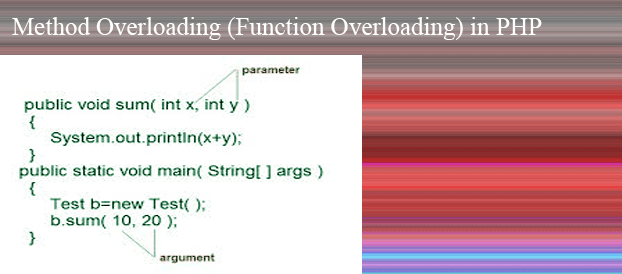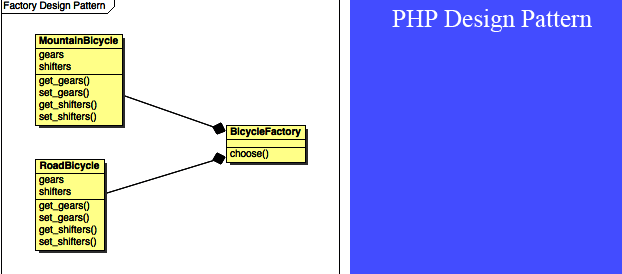Exploring Abstraction in PHP: Simplify Complexities
Abstraction is one of the core principles of Object-Oriented Programming (OOP). It allows developers to focus on the essential features of an object while hiding unnecessary implementation details. By using abstraction, you can create a clean and user-friendly interface for your code, making it easier to understand and maintain.
In this blog, we’ll delve into abstraction in PHP, its advantages, and how to implement it effectively in your applications.
What is Abstraction?
Abstraction is the process of hiding the internal details of how an object works while exposing only the relevant functionalities. This ensures that users of the class interact with it without worrying about its underlying complexities.
In PHP, abstraction is achieved using abstract classes and interfaces.
Example:
Consider a payment system. While different payment methods like credit cards and PayPal may have unique implementations, users only need to know how to process a payment, not the specifics of each method.
Abstract Classes in PHP
An abstract class is a class that cannot be instantiated directly. It can include both abstract methods (methods without a body) and concrete methods (methods with a body). Child classes must implement all abstract methods of the parent abstract class.
Syntax:
abstract class ClassName {
abstract public function methodName();
}
Example:
<?php
abstract class Payment {
abstract public function processPayment($amount);
public function generateInvoice($amount) {
echo "Invoice generated for: $amount" . PHP_EOL;
}
}
class CreditCardPayment extends Payment {
public function processPayment($amount) {
echo "Processing credit card payment of: $amount" . PHP_EOL;
}
}
class PayPalPayment extends Payment {
public function processPayment($amount) {
echo "Processing PayPal payment of: $amount" . PHP_EOL;
}
}
$paymentMethod = new CreditCardPayment();
$paymentMethod->processPayment(500);
$paymentMethod->generateInvoice(500);
?>
Output:
Processing credit card payment of: 500
Invoice generated for: 500
Interfaces in PHP
An interface is a blueprint for a class. It only contains method declarations, and the implementing class must define these methods. Unlike abstract classes, an interface cannot include concrete methods.
Syntax:
interface InterfaceName {
public function methodName();
}
Example:
<?php
interface PaymentInterface {
public function processPayment($amount);
}
class DebitCardPayment implements PaymentInterface {
public function processPayment($amount) {
echo "Processing debit card payment of: $amount" . PHP_EOL;
}
}
class NetBankingPayment implements PaymentInterface {
public function processPayment($amount) {
echo "Processing net banking payment of: $amount" . PHP_EOL;
}
}
$paymentMethod = new NetBankingPayment();
$paymentMethod->processPayment(1000);
?>
Output:
Processing net banking payment of: 1000
Abstract Classes vs Interfaces
| Feature | Abstract Classes | Interfaces |
|---|---|---|
| Method Types | Can have both abstract and concrete methods | Only abstract methods |
| Properties | Can define properties | Cannot define properties |
| Multiple Inheritance | Single inheritance only | Can implement multiple interfaces |
| Use Case | When classes share common functionality | When unrelated classes need to follow a contract |
Benefits of Abstraction
- Code Reusability: Abstraction promotes the reuse of code by defining common methods in a parent abstract class or interface.
- Flexibility: Abstract classes and interfaces make your code flexible and extensible.
- Improved Maintainability: By hiding unnecessary details, abstraction reduces the complexity of maintaining code.
- Modular Design: Abstraction allows for modular programming by separating implementation details from the interface.
Best Practices
- Choose the Right Tool: Use abstract classes when you need to define common behavior and interfaces when you need a strict contract.
- Keep it Simple: Avoid overusing abstraction, as it can lead to unnecessary complexity.
- Follow Naming Conventions: Use meaningful names for abstract classes and interfaces to convey their purpose.
- Combine with Other OOP Principles: Use abstraction in conjunction with inheritance, polymorphism, and encapsulation for a robust design.
Conclusion
Abstraction is a powerful tool in PHP that simplifies complex systems by focusing on the essential features. Whether you use abstract classes or interfaces, implementing abstraction can make your code more readable, maintainable, and scalable.
In the next blog, we’ll explore Encapsulation, another fundamental principle of OOP, and how it helps protect data in PHP.
Kushagra Kumar Mishra
Latest posts by Kushagra Kumar Mishra (see all)
- Advanced WordPress Topics: Security, Performance, and Scalability (Part-2) - March 10, 2025
- Troubleshooting and Advanced Topics Part-1 - March 10, 2025
- Website Design and Development - March 10, 2025





Recent Comments